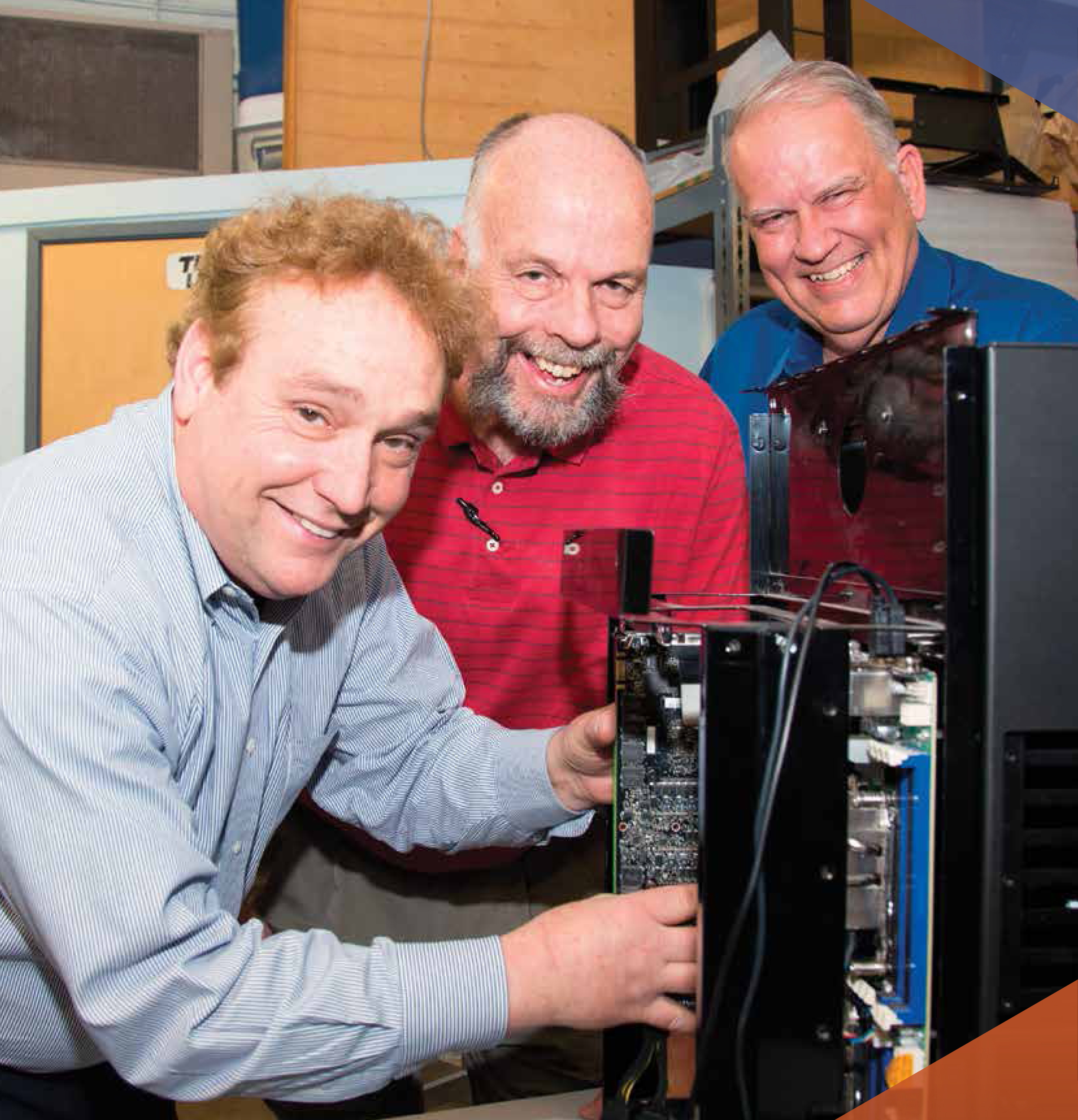By Finance New Mexico
Entrepreneurs Greg Scantlen, Paul Saxe and Chuck Bulow depend on high-speed, sophisticated computers to run their individual businesses. And even though they’re developing different products, the trio decided to apply collectively for free technical assistance from scientists at Los Alamos and Sandia national laboratories through the New Mexico Small Business Assistance (NMSBA) program.
Scantlen owns CreativeC, a Los Alamos and Albuquerque company that works with graphic processing units (GPUs) — chips composed of thousands of parallel processing threads that can process multiple calculations simultaneously at computing speeds about 100 times faster than the traditional central processing units (CPU) used by most home computers.
Scantlen wants to increase processing speeds and power capabilities even more. “That’s my passion,” he said.
Saxe runs Materials Design, an Angel Fire-based software company whose customized modeling software allows researchers to conduct experiments on computers — rather than the physical world — to see how metals, liquids and other materials will interact. Results allow the company’s clients to make their products more efficient, productive and cost effective.
According to Saxe, the two engineers “are always talking about how to push these things forward — he (Scantlen) on the hardware and me on the software.”
Both wondered if LAMMPS, the large-scale atomic/molecular massively parallel simulator developed by scientists at Lawrence Livermore and Sandia national laboratories in the 1990s, could be used as the foundation to help them increase computing speed and make modeling more sophisticated.
With GPU hardware and customized LAMMPS software, the pair turned to Chuck Bulow of Manufacturing Technologies, an Albuquerque-based machine shop known for the tight tolerances needed in jet manufacturing. Bulow’s company created a prototype housing that would be needed to turn the proposed LAMMPS instrument into a commercial product.
That’s when the three applied to the NMSBA program as a leveraged project to test their hypothesis with Los Alamos National Laboratory. NMSBA leveraged projects allow multiple small businesses that share a technical challenge to request lab assistance collectively.
“The first question was does it make sense to even think about using GPUs,” said Paul Saxe. Los Alamos scientist Saryu Fensin, an expert in shock and tension evaluations, was tasked with finding out.
Fensin performed various types of simulations that revealed stunning speedups for larger calculations — the types of sophisticated computations used by scientists and engineers.
“Simulation normally takes six days,” Scantlen said, “because the computations are so complicated, but now we’re seeing speeds of six to eight times faster. Instead of a week, it takes a day to do a complicated simulation.”
According to Scantlen, “there’s major disruption in computing with a lot of new technologies coming out.” The team is using these disruptive technologies — in networking, solid-state storage, memory and others — to build speed and power.
“We’re working on figuring out the right blend,” trying different combinations of these new disruptive technologies, he said. “We’re doing systems integrations with extreme workload specificity. That’s what’s special.”
CreativeC is now leading a Small Business Innovation Research (SBIR) Phase 1 project to commercialize the LAMMPS instrument. Materials Design is starting to sell a version of the LAMMPS instrument, including its proprietary graphic user interface (GUI) for LAMMPS, and the company believes that as sales grow it will be able to hire new employees to support the effort. Manufacturing Technologies will continue to manufacture prototypes for testing and will subsequently manufacture the LAMMPS instrument for commercial sale.
Based on their results, the LAMMPS instrument leveraged project was selected by the NMSBA program as one of the 2015 top ten Outstanding Innovation projects. The project participants will also be recognized at an award luncheon that will kick-off an entire month of Manufacturing Day events.
Through the NMSBA program, small businesses facing a technical hurdle can tap into the expertise and capabilities of the state’s national laboratories to get help with testing, design and consultation, as well as access to special equipment or facilities.
Qualifying individual projects can receive up to $20,000 worth of technical assistance, but leveraged projects — presented by multiple small businesses with similar technical challenges — can receive five times that amount. The assistance is free to participants.
The NMSBA program is currently accepting leveraged project proposals for 2017. The application period closes Sept. 12. Requests for individual assistance projects are accepted year-round.
For more information, visit http://www.nmsbaprogram.org/.
Download 465_Entrepreneurs Work Together to Get Help From Lab-Affiliated Program PDF

